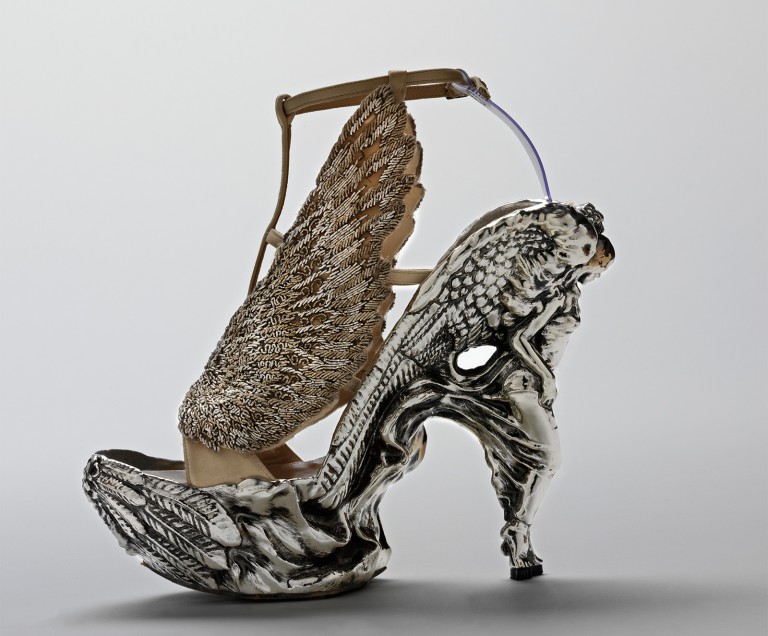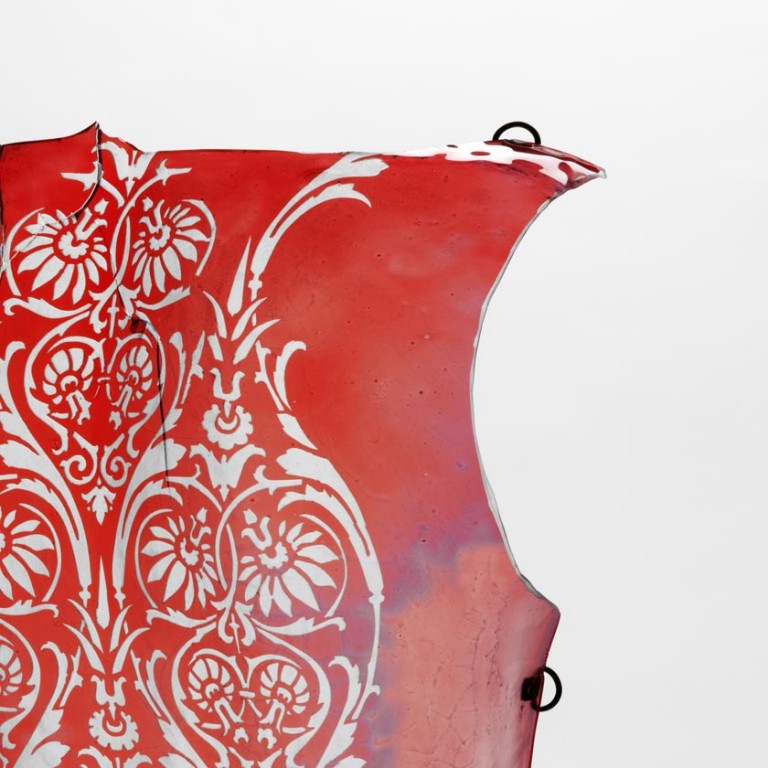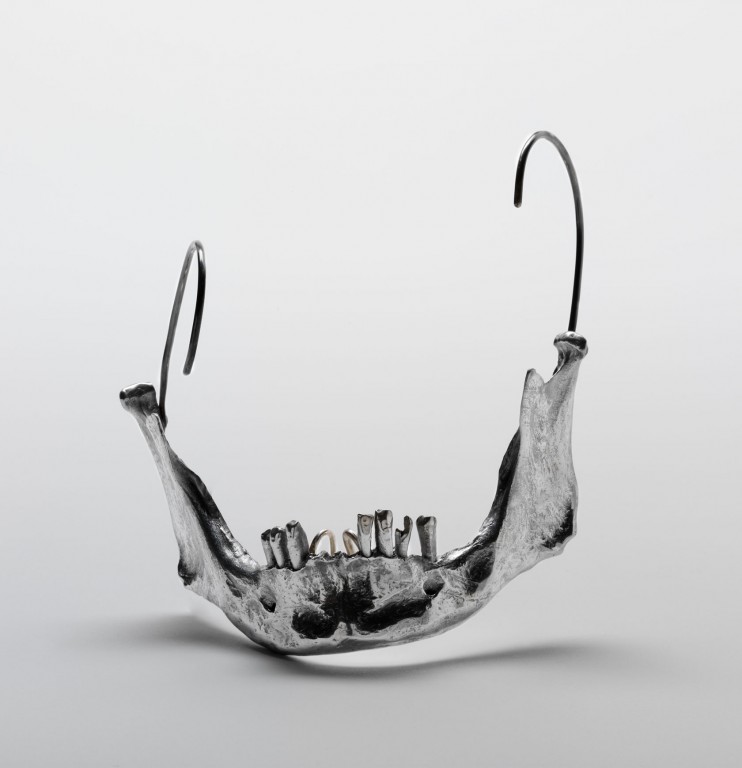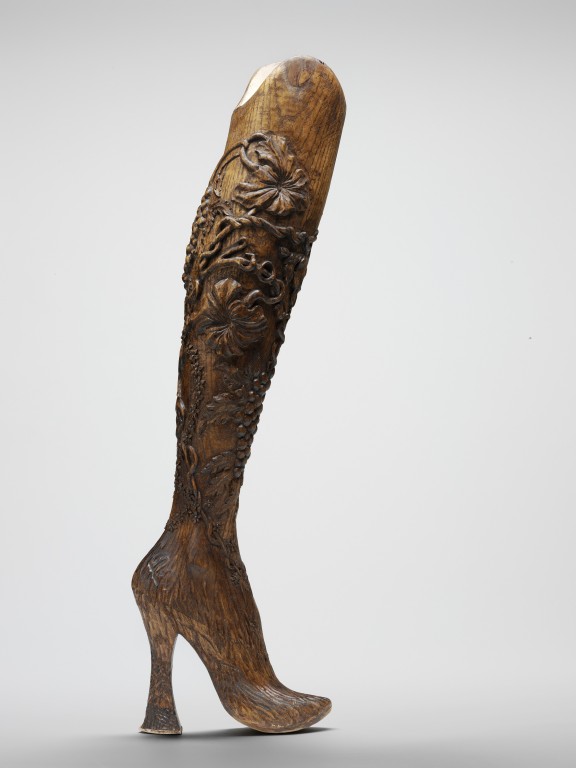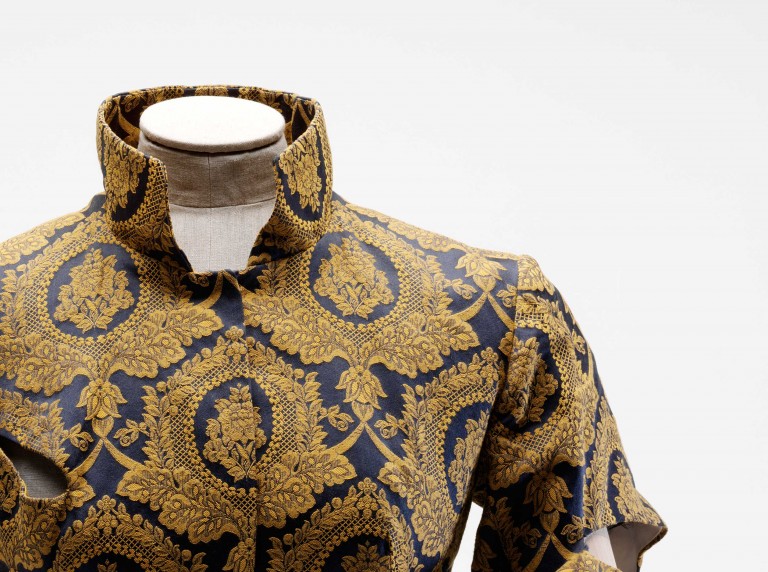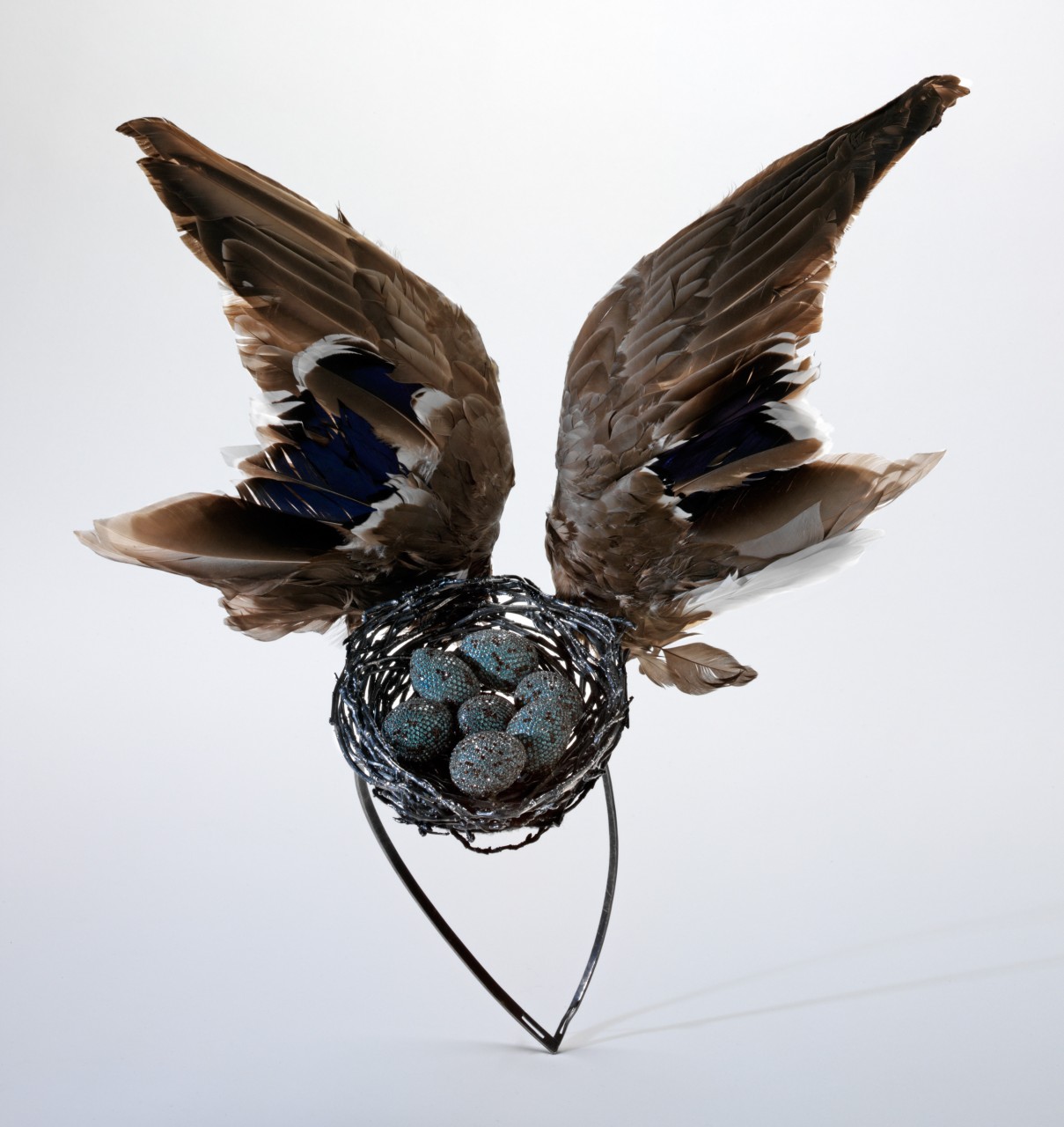ENCYCLOPEDIA OF
COLLECTIONS:
THE WIDOWS OF CULLODEN
McQueen’s audiences had waited several seasons for a return to a theatrical show. They were not disappointed with The Widows of Culloden. The show – once again dedicated to Isabella Blow – was loaded with emotion. While the title appeared in Gaelic on the invitation – Bantraich de cuil lodair – as memoir to a diminishing culture, the emotive soundtrack incorporated an eclectic mix of tracks from Michael Nyman’s score for The Piano (1993), to bagpipes overlaid with drums from a Scottish pipe band, punk rock and the howling winds of the Highlands. Models walked the rough wooden boards of a square catwalk in romantic designs that stood out for their exquisite craftsmanship.
McQueen revisited his interest in his Scottish ancestry and the historic subjugation of Scotland at the hands of its English neighbours. This time the inspiration was the Jacobite Risings that culminated in the Battle of Culloden (1745), the collection a memorial to the widows who had lost their husbands in the bloody conflict.
Despite the emotive subject matter, The Widows of Culloden was a more composed and less aggressive rendering of Scotland’s past than McQueen’s Highland Rape collection. It was filled with the now familiar McQueen tartan, although this time its application was more refined. A tartan dress was draped over one shoulder and around the neck in traditional Scottish style but ccompanied by a tulle underskirt and a top of flesh-coloured net appliquéd with black lace. A black belt with Celtic buckle cinched the waist to emphasize the female form. Once again, McQueen celebrated the Scottish gamekeeping tradition, this time with neat tweed suits paired with plumes from grouse and partridge. An exquisite headdress by Philip Treacy and Shaun Leane comprised a bird’s nest filled with seven soft blue, speckled eggs encrusted with Swarovski crystals and flanked by mallard’s wings.
The collection was striking for the level of craftsmanship inherent in each of the designs. An evening gown constructed from tiers of pheasant feathers demonstrated a lightness of touch and an ingenuity of construction. McQueen, who was interested in the concept of heirlooms, wanted to invest every piece with emotional content. His intention was poignantly conveyed in a majestic grey lace dress with ruffled skirt, modelled by Raquel Zimmermann, and worn with resin antlers draped with an antique lace veil.
The collection conveyed a sense of melancholy that was not only transmitted in the fragility of the designs but also consolidated in its memorable finale. As the lights dimmed, Kate Moss emerged as an ethereal apparition from within a glass pyramid, slowly dancing in the air in a delicate chiffon dress to John Williams’ haunting soundtrack from Schindler’s List (1993). The sequence, produced by Baillie Walsh and art directed by McQueen, was inspired by the Lumière brothers’ film Danse Serpentine (1896), based on the dance made famous by Loie Fuller in 1891. It was another technological feat for McQueen, this time with roots extending to the nineteenth century stage mechanics of ‘Pepper’s Ghost’.

